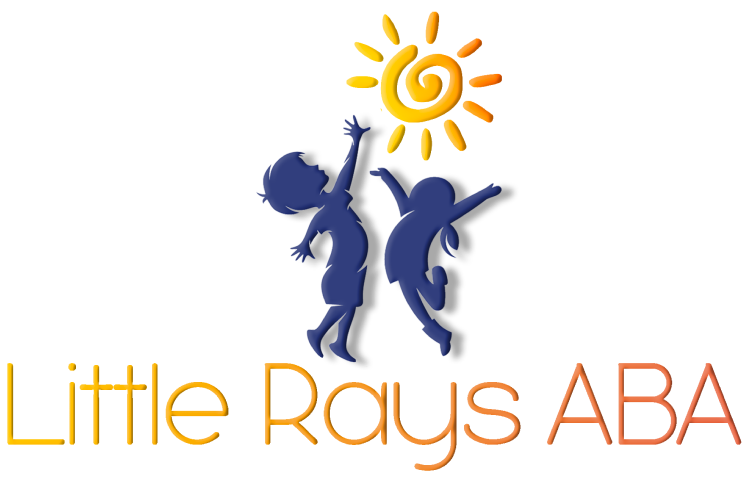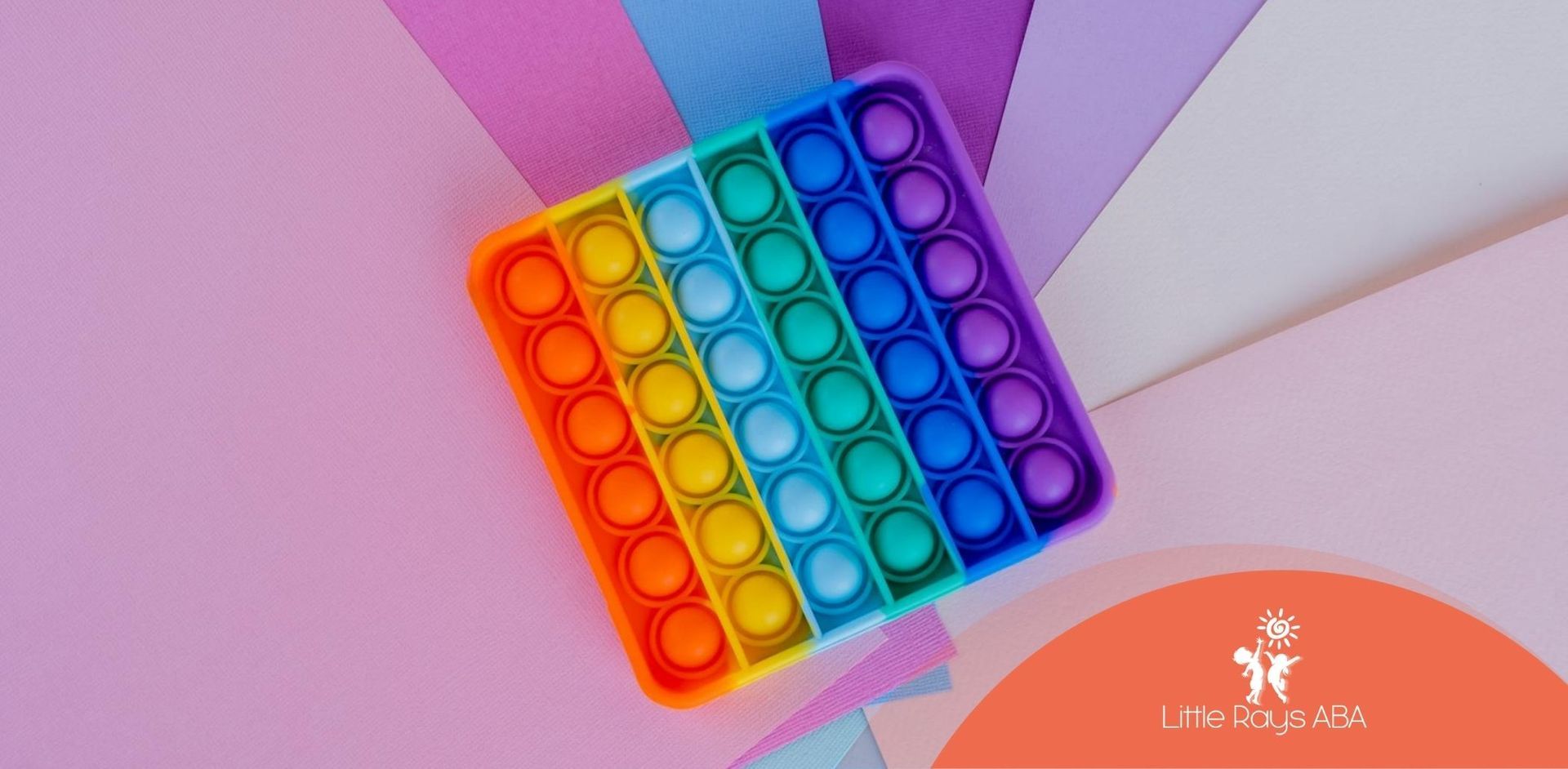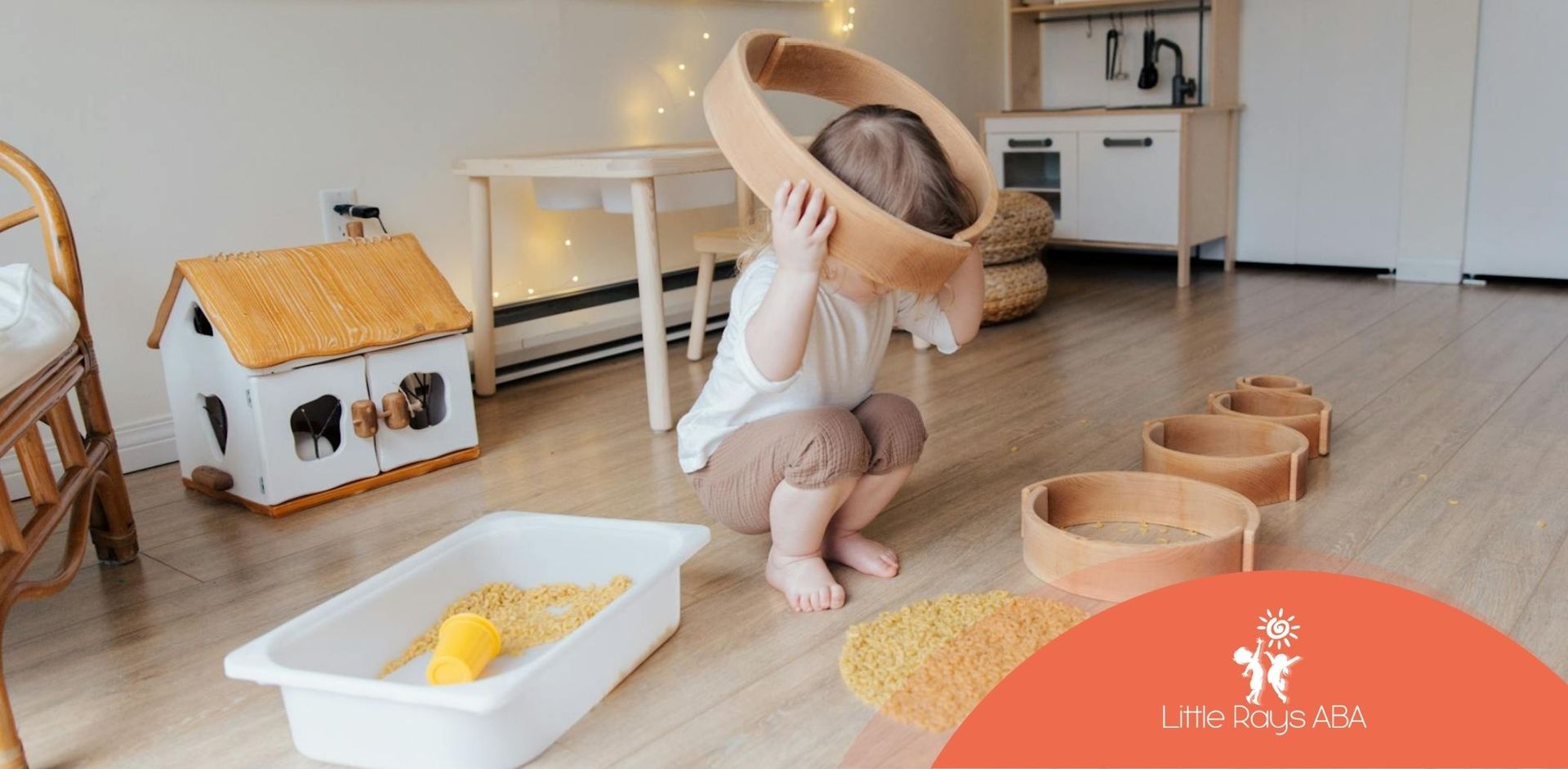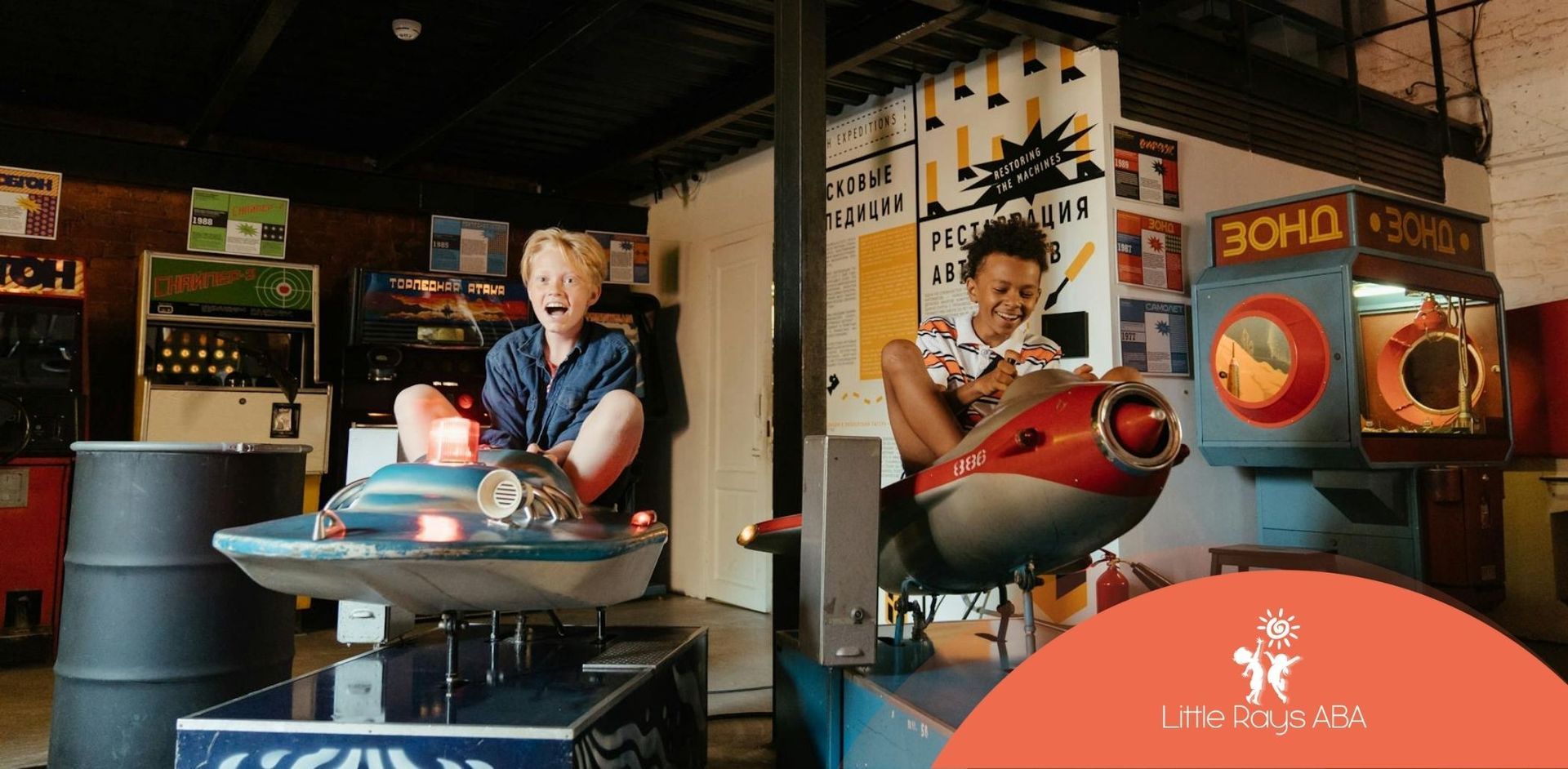Understanding Sensory Play
Importance of Sensory Play
Sensory play is all about letting kids dive into their senses—touch, smell, sight, sound, and even taste. It's like giving them a backstage pass to explore and learn about their surroundings. This kind of play is super important, especially when they're little. It helps build those brainy skills and makes new brain connections, which is great for language and keeping emotions in check.
When kids get into sensory play, they're picking up skills they'll use later on. By reacting to different things, they get better at understanding their world and processing what they sense. This is a big deal for kids with autism or sensory processing disorders, as it helps them figure out and feel more comfortable in their environment.
Benefits of Sensory Toys
Sensory toys are like little bundles of fun that get one or more of a kid's senses going. They're designed to be stimulating and interactive, giving kids a boost in their development from the get-go. These toys pack a punch with benefits like:
- Cognitive Development: Sensory toys can help kids learn how things work, solve problems, and process information. For example, toys that make noise can teach kids that what they do affects the world around them.
- Social and Language Development: These toys also help with social skills and language by teaching kids new words, and encouraging them to take turns, share, and work together.
- Emotional Regulation: For kids with autism and sensory processing disorders, sensory play can help them manage their feelings. Playing with these toys can be calming, helping them to self-regulate and feel less anxious.
- Motor Skills Development: Many sensory toys get kids using their hands and fingers, which is great for fine motor skills and hand-eye coordination. Activities like squeezing, pulling, and moving things around can really build up these important skills.
For parents and caregivers on the hunt for the best toys for autistic toddlers or toys for autistic teenagers, sensory toys are a fantastic choice. They offer a bunch of benefits that support overall growth. By adding these toys to playtime, kids with sensory processing disorders can find joy and development in a supportive and fun setting.
Sensory Toys for Autism
Sensory toys are like magic wands for kids with Autism Spectrum Disorder (ASD). They’re crafted to tickle the senses, bring peace, and boost concentration. Knowing how these toys work can help parents, teachers, and therapists pick the best ones for kids with autism.
Stimulating Senses
Sensory toys for folks on the autism spectrum are made to jazz up one or more senses. These toys give the sensory kick that kids with autism often crave, helping them chill out, self-regulate, and get involved. Sensory processing disorder (SPD) is pretty common among kids with ASD, with reports ranging from
42% to 88%. Kids with SPD might struggle to handle sensations and specific stimuli, leading to behaviors like rocking or hand-flapping.
| Sensory Toy Type | Sensory Stimulation |
|---|---|
| Textured Toys | Touch |
| Light-Up Toys | Visual |
| Musical Toys | Auditory |
| Scented Toys | Smell |
| Chewable Toys | Taste |
These toys can help kids with autism by offering controlled sensory experiences that encourage adaptive motor responses. For instance, textured toys can tickle the sense of touch, while light-up toys can dazzle the eyes. Musical toys can serenade the ears, and scented toys can tickle the nose. Chewable toys can satisfy the need to chew.
Promoting Calmness and Focus
Besides jazzing up the senses, sensory toys can also help kids chill out and concentrate. Kids with autism often find comfort in toys that help them manage their sensory needs. Sensory Integration (SI) theory, cooked up by A. Jean Ayres, is all about how the brain processes sensory info. Interventions based on SI theory aim to offer controlled sensory experiences to improve how kids handle sensory input related to behavior and attention.
| Sensory Toy Type | Benefit |
|---|---|
| Weighted Blankets | Calming |
| Fidget Tools | Focus |
| Stress Balls | Relaxation |
| Sensory Bottles | Visual Calmness |
| Vibrating Toys | Soothing |
Weighted blankets, for example, can give deep pressure stimulation, which chills out the nervous system. Fidget tools can help kids with autism stay focused during tasks. Stress balls can be a great way to let off steam and relax. Sensory bottles, filled with glitter or other eye-catching stuff, can offer a calming visual experience. Vibrating toys can provide soothing tactile stimulation.
Picking the right sensory toys for kids with autism means understanding their unique sensory needs and likes. Watching how a kid reacts to different toys can help figure out which ones work best.
By adding sensory toys to playtime and therapy sessions, parents, teachers, and therapists can support the sensory needs of kids with autism, helping them thrive and enjoy their daily activities. For more resources on therapeutic toys, explore our guide on therapeutic toys for autism.
Sensory Processing Disorders (SPDs)
Impact on Daily Life
Sensory Processing Disorders (SPDs) can really shake up a kid's day-to-day. These disorders make it tough for kids to figure out what to do with all the sights, sounds, and other sensations they encounter. This can make it hard for them to connect with others and join in on regular activities. Kids with SPDs might react super strongly to things like loud noises or scratchy clothes, or they might not react much at all, or they might be on the hunt for more sensory input.
The way SPDs mess with daily life can be pretty intense. Imagine a kid having a hard time with simple stuff like getting dressed, eating, or playing with friends. These struggles can make them feel left out, knock their confidence, and even lead to feeling down, especially as they get older. Plus, parents might find themselves stressed out trying to help their kids manage all this sensory stuff, which can put a strain on family life.
Symptoms and Challenges
Kids with SPDs show a bunch of different symptoms, and they can be all over the map. Some common signs include freaking out or not reacting enough to noises, clothes, or food textures. These reactions might look like meltdowns, tantrums, or just pulling away from things that are too much. These symptoms can also be tied to clumsy movements, trouble with talking, and issues with paying attention and communicating.
| Symptom | Description |
|---|---|
| Overreacting to Sensory Input | Super sensitive to sounds, textures, or lights |
| Underreacting to Sensory Input | Needs more sensory input to respond |
| Poor Motor Skills | Struggles with coordination and fine motor tasks |
| Language Delays | Trouble developing and using language well |
| Social Isolation | Pulling away from social interactions due to sensory overload |
| Low Self-Confidence | Feeling down about themselves because of sensory challenges |
SPDs are pretty common in kids with Autism Spectrum Disorders (ASD), with numbers ranging from 42% to 88%. These kids often have a hard time handling sensations and specific stimuli, which might lead them to engage in repetitive behaviors to either get more sensory input or avoid too much of it.
Getting a handle on the symptoms and challenges of SPDs is key for picking the right toys for sensory processing disorder. Sensory toys can help wake up the senses, bring calm, and boost focus. For more tips on picking the right toys, check out our article on autism-friendly toys.
Selecting Sensory Toys
Picking out sensory toys for kids with sensory processing disorder (SPD) is like finding the perfect pair of shoes—it's gotta fit just right. These toys can make a big difference in a child's growth and everyday life, so it's important to choose wisely.
Considerations for Choosing Toys
When you're on the hunt for toys for kids with SPD, there are a few things to keep in mind to make sure the toys are both fun and helpful. According to National Autism Resources, here's what you should think about:
- Age Appropriateness: Make sure the toy is right for the child's age. You want it to be safe and challenging, but not too hard.
- Sensory Preferences: Figure out what kind of sensory input the child likes—whether it's touchy-feely, noisy, or colorful.
- Durability: Go for toys that can take a beating, especially if the child tends to play rough.
- Level of Stimulation: Pick toys that give just the right amount of sensory input without going overboard.
Observing Child's Reactions
Watching how a child reacts to different sensory toys is key to figuring out if they're a hit or a miss. According to HuffPost, here's how you can do it:
- Initial Interaction: See how the child first plays with the toy. Are they into it, or do they seem bored or stressed out?
- Sustained Engagement: Check if the child keeps playing with the toy over time. If they do, it probably means the toy is doing its job.
- Behavioral Changes: Look for any changes in how the child acts. If they're more focused or calm, that's a good sign.
- Feedback: If the child can talk, ask them what they think about the toy. Their thoughts can give you a lot of clues about what they like.
By keeping these tips in mind and watching how the child reacts, parents and caregivers can find the best sensory toys for kids with SPDs.
Types of Sensory Toys
Picking the right sensory toys can really change things up for kids with Sensory Processing Disorder (SPD). These toys are all about getting the senses involved, boosting brain power, and sharpening those little motor skills. Let's take a look at two crowd favorites: textured toys and fidget tools.
Textured Toys
Textured toys are all about touch. They come in all shapes and sizes, like soft squishy balls, bins filled with all sorts of materials, and toys that are bright and funky. These toys invite kids to reach out and touch, sparking happy physical and emotional reactions.
These toys can help kids learn how things work, solve problems, and process info. For example, toys that make noise can teach kids that what they do affects the world around them.
| Toy Type | Benefits |
|---|---|
| Soft Textured Balls | Stimulates touch, improves hand-eye coordination |
| Sensory Bins | Encourages exploration, enhances cognitive skills |
| Noise-Making Toys | Teaches cause-and-effect, promotes auditory processing |
Fidget Tools
Fidget tools are small toys that kids can hold in their hands to help them focus and chill out. They come in all sorts of forms, like spinners, cubes, and stretchy bands. These tools give sensory input that helps kids manage their energy and stay on task.
Fidget tools also help with social and language skills by teaching words, encouraging sharing, and getting kids to play together. Plus, they help develop fine motor skills by working those small hand and finger muscles, boosting hand-eye coordination, dexterity, and strength.
| Fidget Tool | Benefits |
|---|---|
| Spinners | Improves focus, reduces anxiety |
| Cubes | Enhances fine motor skills, promotes concentration |
| Stretchy Bands | Provides sensory input, encourages movement |
By getting to know the different sensory toys out there, parents, therapists, and teachers can make smart choices to help kids with Sensory Processing Disorder grow and thrive.
Therapy and Intervention
Sensory Integration Therapy
Sensory Integration (SI) therapy, cooked up by A. Jean Ayres, is all about helping the brain make sense of the world through our senses. It's like giving the brain a workout to handle sensory info better. The therapy's main gig is to offer controlled sensory experiences that get the body moving in a good way. The big wins here? Better behavior, sharper focus, smoother social skills, and more independence, all thanks to improved sensory integration.
SI therapy is like a fun obstacle course for the senses. Kids get to tackle activities that make them react to sensory stuff in a planned, repetitive way. Think of it as training the brain to handle sensory info like a pro. A therapist might bring in textured toys or fidget gadgets to get the senses buzzing and encourage positive reactions.
Occupational Therapy Approaches
Occupational therapy (OT) is another big player for kids dealing with Sensory Processing Disorder (SPD). OT is all about helping kids nail the skills they need for everyday life. Jumping in early can make a world of difference in how a child handles sensory hiccups.
Occupational therapists have a bag of tricks for tackling SPD, including:
- Sensory Integration Therapy (SI): Yep, SI is a staple in OT for SPD.
- Sensory Diet: Think of it as a custom menu of activities that give a child the sensory input they need to stay on track and organized all day.
- Adaptive Techniques: Teaching kids how to use tools and tricks to handle sensory challenges wherever they are.
Therapists often bring sensory toys into the mix to keep kids engaged and provide the sensory input they crave. Textured toys and fidget tools are great for kids with touch sensitivities.
By getting the hang of these therapy approaches, parents, teachers, and therapists can better support kids with SPD, helping them on their way to better sensory processing and a happier life.
SOURCES:
https://pmc.ncbi.nlm.nih.gov/articles/PMC3708964/
https://www.huffpost.com/entry/kids-gifts-sensory-processing-disorder_l_61a537dee4b025be1aed50f3
https://nationalautismresources.com/blog/what-is-a-sensory-toy-and-how-can-they-help/?srsltid=AfmBOopml5_a0OGM55dTaiFzc5yrLARuoIp4srj37Rf2BEV6prAvZwhg
https://familydoctor.org/condition/sensory-processing-disorder-spd/
https://specialneedstoys.com/usa/tactile/textures?srsltid=AfmBOoqN4wOqjZBGFqSQV1sHWC3YKcLjzaD2ojERnYO17kcD_YHhCuxV
https://www.brownhealth.org/be-well/fidget-toys-what-are-they-and-how-can-they-help-children-and-adults
https://pmc.ncbi.nlm.nih.gov/articles/PMC9688399/
Unlock Your Child's Potential with Expert ABA Therapy!
At Little Rays ABA, we provide compassionate, evidence-based ABA therapy to help children with autism thrive. Our personalized approach fosters growth in communication, social skills, and independence.
Get In Touch With Us Today to Get Started With ABA Therapy!
Related Posts
MENU
GET IN TOUCH
7117 San Salvador Dr Boca Raton, FL 33433
3200 Collins Ave Miami Beach, FL 33140



